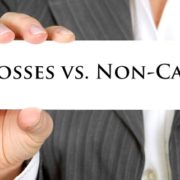How to setup a business in Ontario?
How to setup a business in Ontario?
Setting up a business can be an overwhelming task with a lot to comprehend. It all starts with a dream and a vision, but how do you turn that dream into reality. The dream of becoming your own boss and having the freedom to make your own decisions can be a complicated one at the beginning. Once you have determined on the actual business and its inner workings, you will have to move on to the next step of executing that business. This is where a lot of people get stuck and don’t really know where to go next.
In this article I will explore and shed light on several different business structures available in Ontario. I will also explain how to be in compliance with Canada Revenue Agency (CRA) tax obligations.
The three most common structures are Sole proprietorship, Partnership, and Incorporation.
1. Sole proprietorship
Sole proprietorship, also known as a proprietorship or a sole business, is a type of business that is owned and operated by a single individual. Other individuals do not participate or own the business. This is the most simplest form of operating a business.
A sole proprietorship is simple to setup, you can operate the business under your personal name. If you desire to use an operating name you are able to register a Master Business License and operate under an operating name. The requirements for setting up a sole proprietorship are outlined in the provincial legislation.
The shortfall with a proprietorship is that the sole proprietor is personally liable for the business. There is no legal separation between the business and its owner. This creates unlimited liability from creditors and other business debts.
What are the setup cost?
The setup costs are relatively low. To Register a Master Business License online the government fee is $60. There are additional fees for name search and enhanced business name search.
How is a sole proprietorship taxed?
A proprietorship is not a separate legal entity and is taxed based on the proprietors personal income. A separate tax return is not required. The income or losses of the proprietorship will be taxed at the applicable marginal rate of the individual. If the business is profitable this may put you in a higher tax bracket.
There is no need to obtain a CRA business number for a sole proprietorship. However, in certain circumstances you will be required to register a HST number. If you have employees you will be required to register a payroll number. All of which can be done over the phone by calling the CRA business line.
The income and expenses from the sole proprietorship can be reported on your T1 Personal Income Tax return on the T2125 Statement of Business Activities form. You will be required to keep all your receipts for income tax purposes.
2. Partnership
Much like a sole proprietorship, a partnership is not a separate legal entity. A partnership arises from the legal relationship between two or more people that join forces to start a business. The partners do not have limited liability from creditors and personal assets could be seized. This has given arise to several different partnership structures, including General Partnerships, Limited Partnerships, and Limited Liability Partnerships; each of which has a different level of personal liability.
What is a General Partnership?
In a general partnership each partner is jointly and separately liable for the liabilities and obligations of the partnership. In this type of partnership, the partners do not have limited liability from creditors and personal assets could be at risk.
What is a Limited Partnership?
A limited partnership consists of a general and a limited partner. The limited partner has limited liability and only the initial investment is at risk to creditors. The general partner has unlimited liability.
What is a Limited Liability Partnership (LLP)?
A LLP is created under The Partnerships Act which allows certain professionals to practice under a LLP. The legislation states that the partner is not personally liable for any liabilities of the partnership that arise as a result of negligence by other partners of the LLP. The partners’ investment and the assets of the LLP can be at risk.
Do I need a partnership agreement?
Although a partnership agreement is not required by law, it’s a very good idea to have one in place. The partnership agreement would help avoid disputes among the partners in the future. The partnership agreement should include the following:
- General governing rules regarding the partnership
- How to add or remove partners
- What happens in case of death of a partner
- How to divide and distribute profits and losses
How is a partnership taxed?
A partnership is not a separate legal entity and does not file a separate tax return. The profits and losses flow directly to the partners, who report the income/losses on their personal tax return. A partnership could be required to file a T5013 Statement of Partnership Income depending on revenues and other criteria. A partnership calculates income and expenses in accordance with section 96(1) of the Income Tax Act which states that income and expenses have to be calculated at the partnership level.
A CRA business number for a partnership is not required. However, in certain circumstances you will be required to register a HST number. If you have employees you will be required to register a payroll number. All of which can be done over the phone by calling the CRA business line.
3. Corporation
A corporation is a separate legal entity which can be incorporated at the federal or provincial levels. A corporation is separate from its shareholders and must file a tax return annually regardless of the revenues it makes. A shareholder of the corporation is not liable for debts of the corporation. Although a corporation can be named in a lawsuit, the shareholders have limited liability to the capital contributed to the corporation.
What is a Federal (Canadian) incorporation?
Federal incorporation will allow you to operate and open branches all across Canada with the same name. The corporate name is recognized all over Canada. A Federal corporation is required to file a annual return every year as long as the corporation remains active. You will also have to register in the province you decide to operate in.
What is an Ontario (Provincial) incorporation?
Ontario or provincial incorporation will only allow you to have a branch in Ontario. If you decide to open a branch in another provide you will be required to incorporate there as well (the same name might not be available). With an Ontario corporation you are still able to sell your products across Canada.
How is a corporation taxed?
The income earned in the corporation is taxed at the corporate rate. The funds left over after paying taxes are considered retained earnings of the corporation. The retained earnings are distributed to the shareholders through dividends and are then taxed in the shareholders’ hands at their respective marginal tax rate.
What is the corporate tax rate in Ontario/Canada?
The corporate tax rate depends on the type of corporation setup and which tax credits it qualifies for. A corporation earning Active Business Income, which qualifies for the Small Business Deduction of 17%, will typically have a combined Federal & Provincial rate of 15%. The provincial rate is 3.5% and the federal rate is 11.5%.
| Small-business tax rate | General corporate tax rate | M&P Corporate tax rate | |
| General Corporate Tax Rate | 38.00% | 38.00% | 38.00% |
| Federal abatement | -10.00% | -10.00% | -10.00% |
| 28.00% | 28.00% | 28.00% | |
| Small-business deduction | -17.00% | 0.00% | 0.00% |
| General tax rate reduction | 0.00% | -13.00% | 0.00% |
| M&P deduction | 0.00% | 0.00% | -13.00% |
| Federal Tax Rate | 11.00% | 15.00% | 15.00% |
| Provincial Tax Rate (Ontario) | 3.50% | 11.50% | 10.00% |
| Total Tax Rate | 15.00% | 26.50% | 25.00% |
What are the setup costs?
The setup costs can range from $500 to $5,000 depending on the tax structure and legal advice needed. Contact SDVC LLP for a more detail estimate.
Canada Revenue Agency (CRA) Requirements
When to file corporate taxes?
All corporations have to file a corporation tax (T2) return every tax year even if there is no tax payable. If you are a CCPC the payment is due 90 days after the corporate year end and filing is due 180 days from the year end.
CRA Business Number
The CRA will open a business number for your corporation. The CRA will request that one of the owners or directors provide a social insurance number and major business activity.
GST/HST Number
You will be required to open a HST number if your revenues are going to be above $30,000 or you plan on collecting HST on the goods or services you provide. You also have the option to voluntary register for a HST number from the beginning. It is critical that you review the CRA’s GST/HST Guide to stay in compliance of the regulations.
This CRA tool can determine if you Should register for a GST/HST account?
Payroll Number
You have to register for a payroll account before the first remittance due date. Your first remittance due date is the 15th day of the month following the month in which you began withholding deductions from your employee’s pay.
Conclusion
The type and size of business will often dictate the structure of the business. A lot of businesses start as a sole proprietorship (for the above reasons) and as they grow they will change into a corporation. There are tax provisions which can be used to roll over the business to a corporation tax free. Contact SDVC LLP Chartered Accountant for help.









